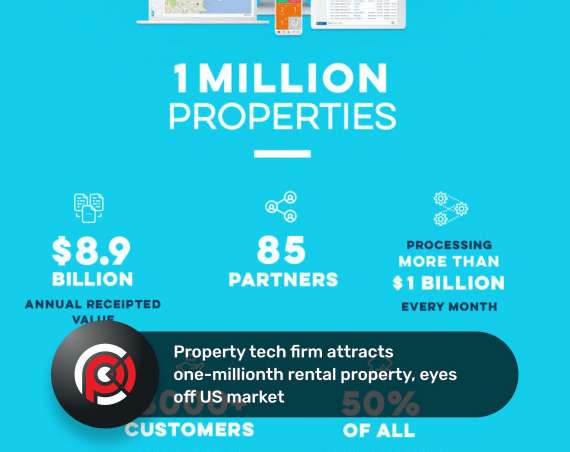
Neo banks have been disrupting traditional banking institutions across the UK, Europe and North America with great levels of success. Highlighting this, UK-based neo bank Monzo was recently valued at AUD $3.6 billion and reports 55,000 new accounts are opened every week.
Now, in the wake of the Royal Commission, neo start-ups are throwing down the gauntlet to Australia’s big four banks.
But can they go toe to toe with the banks when it comes to the battleground of real estate and home loans?
WHAT ARE NEO BANKS?
Neo banks are vastly different to conventional banks in that they are entirely digital and don’t rely on the traditional types of technology and infrastructure that the established institutions do. They have no bricks and mortar presence and the technology that is central to their operation is created from the ground up to provide customers with a seamless user experience on any device that is connected to the web.
Judo Bank co-founder David Hornery, a veteran in the finance industry with over 30 years of experience across institutions like ANZ, Macquarie Bank and NAB, explains that the technology behind neo banks:
“…give you a much greater breadth and depth of capacity and flexibility… that gives you, in many ways, an unfair advantage over those that began with technology 20, 30 years ago and have not comprehensively overhauled that.”
It is this fresh, innovative, purpose-built technology upon which neo banks are created that really sets them apart from old school banks. Neo banks conduct all their business via apps, which means the days of having to visit physical bank branches and queue up are rapidly drawing to a close.
DON’T ALL BANKS HAVE APPS NOW?
While it’s true that all the banks do offer apps, neo bank apps offer enhanced performance and a more streamlined experience without relying on the rapidly aging legacy technology of traditional banks.
With neo banks, the app that serves as the control centre for your finances is equipped with a high level of functionality, allowing users to manage spending patterns, transfer funds with other users and employ AI technology to set up savings goals that the app actively helps you work towards, giving you alerts around spending habits that could compromise your stated financial aspirations.
Neo bank apps also give you visibility across accounts held with other institutions and provide automatic predictions of upcoming payments to help manage your funds and make more informed financial decisions.
HOW DO NEO BANK START-UPS LAUNCH?
In an effort to circumvent banking regulations, most neo banks launch off the back of pre-paid debit cards linked to an app as their solitary product, allowing them to hit the market while sidestepping regulatory requirements that are imposed on banks.
Currently, in addition to the pre-paid debit cards they started out with, Australian neo banks offer transaction accounts and savings accounts with interest rates of up to 2.5%, an extremely competitive figure in the current financial climate and the highest rate available in Australia at this point in time.
Here is where another point of difference arises – neo bank accounts allow you to hold multiple currencies and earn interest on them, making them an ideal choice for forex traders.
WHAT ROLE WILL THEY HAVE IN REAL ESTATE?
As the neo banks are evolving, they are extending deeper into the realms of personal finance products and services.
Most notably, they are increasingly exploring and integrating home loans and mortgages into their services – and they are actively looking to undercut the big banks on interest rates.
This blurring of the lines between FinTech and PropTech enables the neo banks to tailor loan packages in a way that the old banks simply can’t or won’t do. This is due, in part, to the fact that neo banks don’t have the same overheads and operational costs because they are run from a central digital platform and don’t have branches.
While many people still choose to meet with a broker to sit down and discuss mortgage options, the ability to offer home loans at lower rates without the hassle of negotiating and going back and forth is a clear advantage and is a primary reason the younger home buying demographic will gravitate towards neo banks.
WHO ARE THE AUSTRALIAN NEO BANKS ENTERING THE HOME LOAN MARKET?
- 86 400
- Named after the number of seconds in a day, 86 400 offers home loans with competitive rates, digital applications, smart contracts, faster approvals and access to broker assistance. Showcasing transparency you would never get from the big banks, they also have a service on their website that highlights the true cost of the home loans they provide.
- Athena
- A rapidly growing FinTech start-up, Athena is a mortgage provider that utilises proprietary technology to streamline the home loan process and provide borrowers with low rates. They also provide refinance mortgages for owner-occupiers and investors.
- Revolut
- While they don’t currently offer home loans, they have sought and obtained an Australian Financial Services (AFS) licence and are also working towards earning certification as an authorised deposit-taking institution. These are fundamental requirements in order to sell financial products and are strong indicators that they will enter the mortgage market in the near future.
- Volt
- Established in 2017, Volt was the first neo bank to be granted an Authorised Deposit Taking Institution (ADI) licence. While they are yet to launch a home loan product, they have stated that they have a vision to make obtaining a mortgage “faster, easier and more rewarding through better technology”.
- Xinja
- Xinja has been awarded a full Australian banking license and an ADI licence, and has been pilot testing home loan products to a small cross-section of their customers. It is expected that they will do a full-scale launch of their home loan products this year with the aim of “changing the way Australians view and obtain mortgages”.
FINAL WORD
Based on the success of neo bank home loan products in other international real estate markets, it’s reasonable to expect a flood of start-ups riding the wave of early adoption in Australia. As it stands, the existing crop of Australian neo banks are jockeying for position in order to win a slice of the lucrative mortgage market.
Because they don’t have the overheads of traditional lenders, neo banks can pass these savings on in the form of better interest rates and lower fees, which is a very good thing for investors and buyers.


